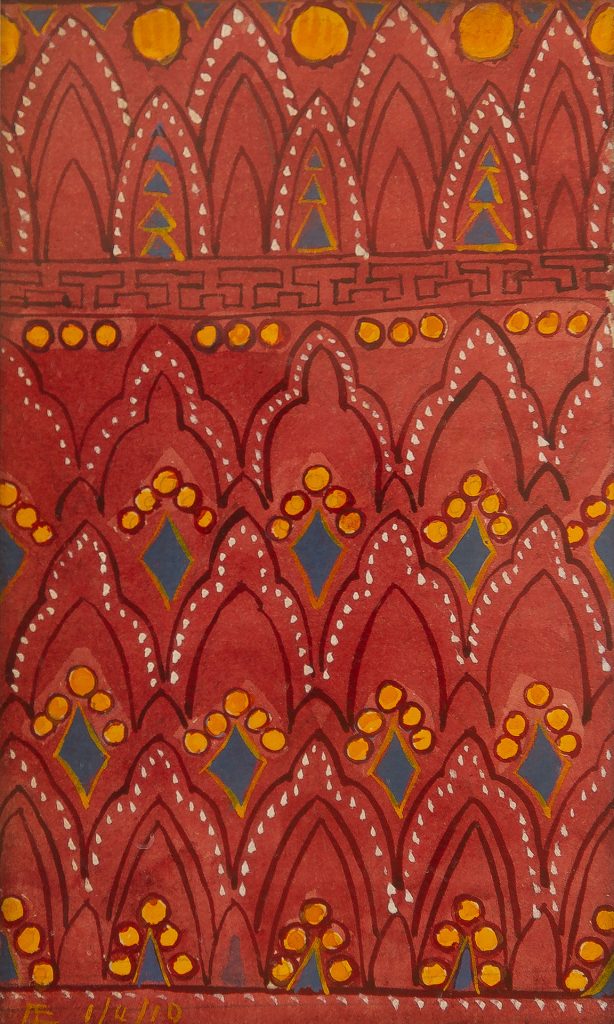The miniature “Ornament red” (1910, watercolor on canvas) by André Evard depicts a strictly rhythmic, ornamental composition in warm red tones, interspersed with yellow, blue, and white accents. In the vertical repetition of Gothic pointed arch forms and the use of geometric elements such as diamonds and dots, an almost architectural pattern unfolds, reminiscent of window rosettes or wall coverings. The structured ornamentation is reminiscent of both oriental and medieval models and reveals Evard’s early preoccupation with decorative structures.
Evard, known for his stylistic diversity, filled numerous sketchbooks with studies in the open air and ornaments even in his early years. His time in La Chaux-de-Fonds was particularly formative, where he devoted himself intensively to Art Nouveau and ornamental design. A similar ornament to that in “Ornament red” can already be found in 1906 in the Villa Fallet – that iconic building that was created under the direction of Charles-Édouard Jeanneret (later Le Corbusier).
The small format of this miniature underlines the intimate character of the work and refers to Evard’s graphic sensitivity as well as his interest in ornamental abstraction, which was later further developed in his constructivist works.
